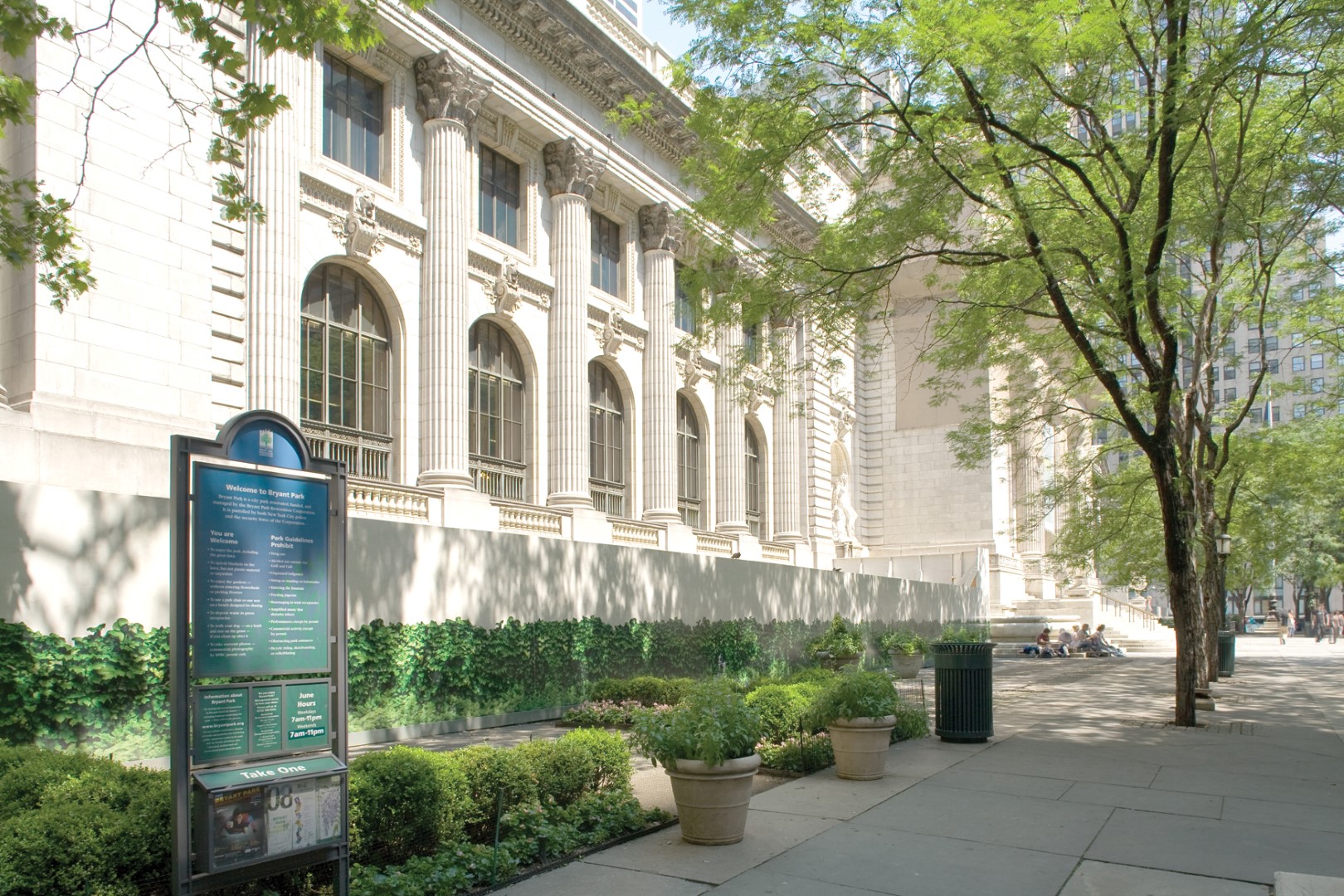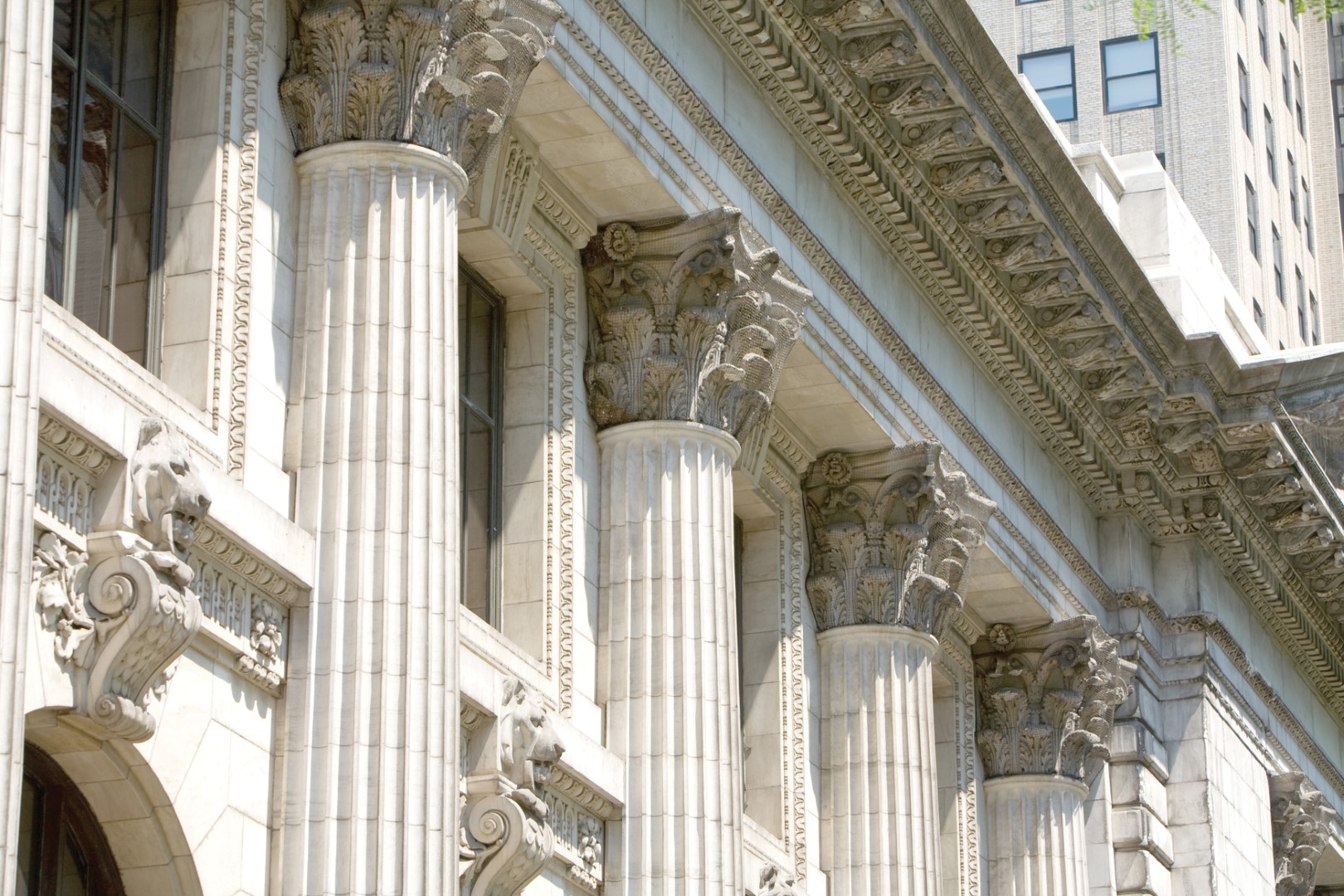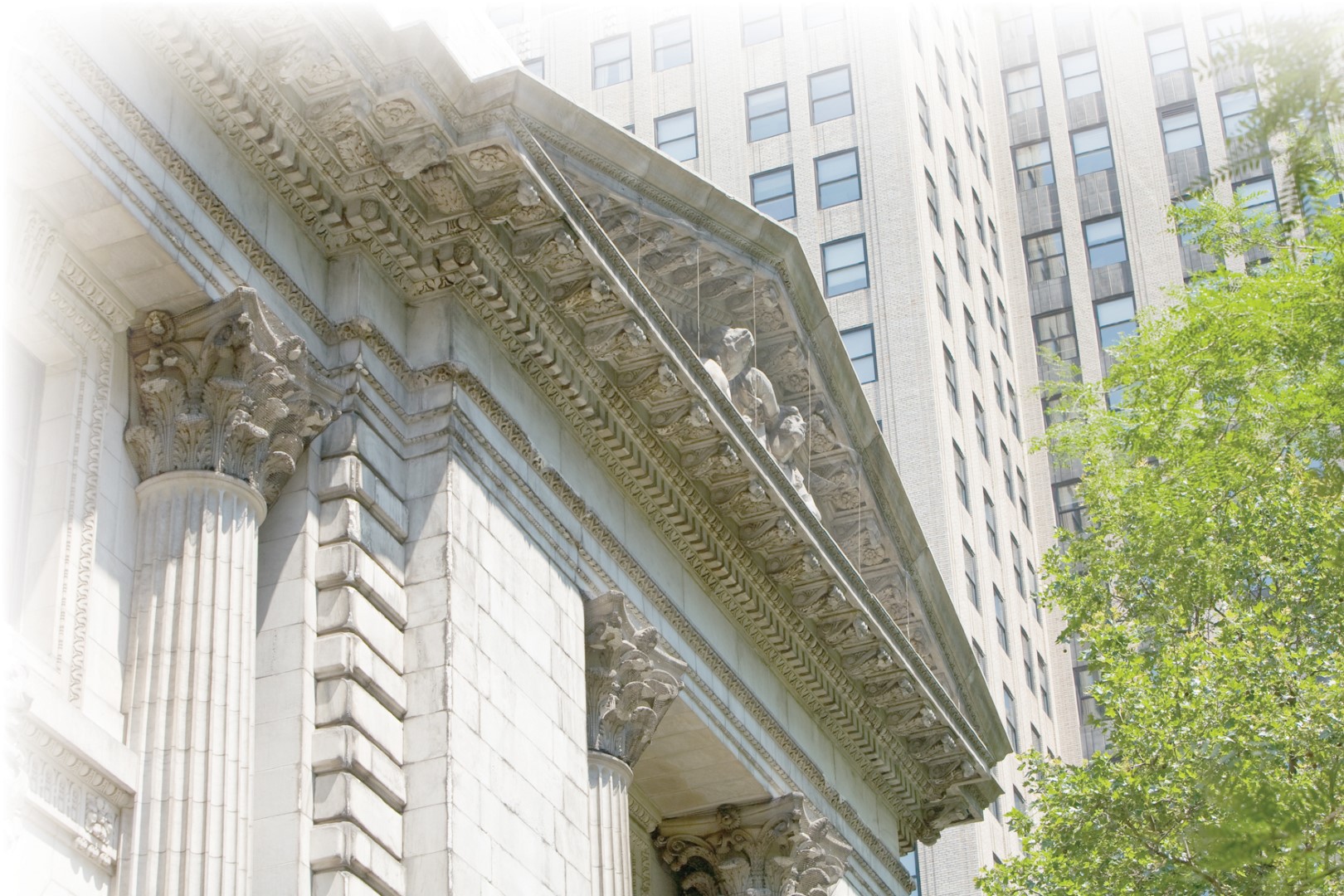
The New York Public Library is one of New York City’s most beautiful and heavily used landmarks. Constructed nearly a century ago from Danby Marble that was quarried in the State of Vermont, the structure is a load-bearing building with stone walls up to three feet thick in some places. The building also features a multi-level façade with elevations up to 120 feet. Graciano has been engaged by the architectural firm of Walter B. Melvin and Associates to provide technical assistance and assessment services that will support extensive façade investigations. These investigations will ultimately form the basis of a comprehensive façade restoration program that will be undertaken in 2007.
The project included:
- Accessing and inspecting all areas of the building’s exterior
- Determining the degree of water infiltration and damage to stone and other exterior components
- Executing emergency repairs on an as-needed basis to stabilize the structure for restoration
- Devising a network of rigging comprised of man baskets on truck cranes to provide the architectural firm with access the façade without disruption to patrons or surrounding city property
- Gathering and interpreting data
Project Details
Project Included
- Stonework
- Spraying/Misting
- Repointing Masonry
- Pressure Washing
- Masonry Surface Rehabilitation
- Masonry Cleaning
- Individual Brick Replacement
- Brickwork
Glossary Terms

